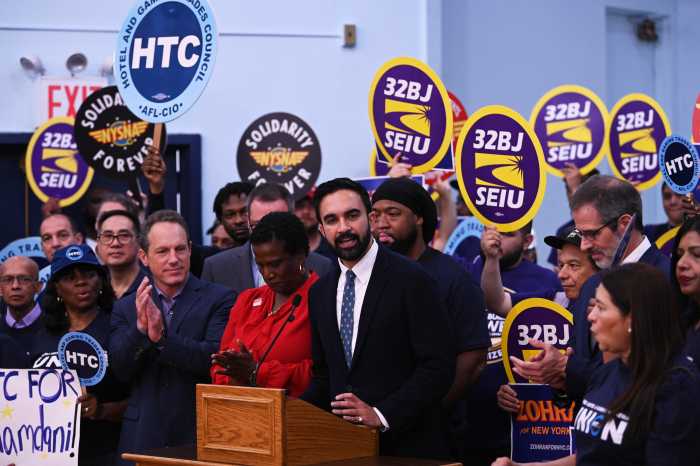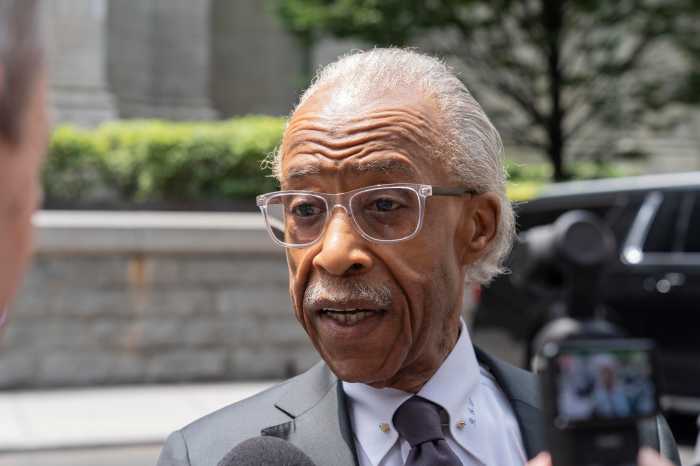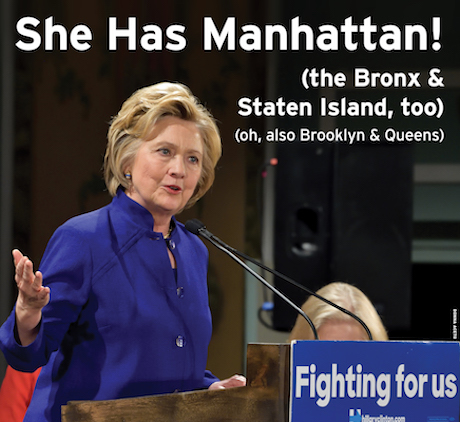
BY PAUL SCHINDLER | After several weeks in which the putative presidential frontrunners in both the Democratic and the Republican Parties were forced back on their heels, Hillary Clinton and Donald Trump came roaring back on April 19 with decisive victories in the New York State primary.
Trump, who was raised in Queens and made his name as a flashy Manhattan real estate developer, captured just over 60 percent of the vote in a GOP primary that drew just under 870,000 votes. His share was more than twice that of his nearest rival, Ohio Governor John Kasich, who garnered a quarter of the total. Texas Senator Ted Cruz — who came out of the April 5 Wisconsin primary with a solid win and has recently outmaneuvered Trump in a series of state delegate selection gatherings that have followed primaries or caucuses — took a New York values drubbing, earning less than 15 percent of the vote.
Ironically, Trump’s weakest showing statewide came in Manhattan, where he was bested by Kasich, 45.2 percent to 41.8.
Though the billionaire frontrunner edged the Ohio governor out in Midtown neighborhoods, he was beaten on both the Upper East and Upper West Sides by Kasich.
Manhattan, however, made up less than three percent of the Republican vote statewide, and Trump’s relatively weak performance in the borough did little to dampen his commanding lead statewide. In fact, among all New York City Republican voters — 107,446, or 12.3 percent of the statewide total — Trump walked away with 64.3 percent, meaning he outperformed his statewide showing in the four boroughs outside Manhattan.
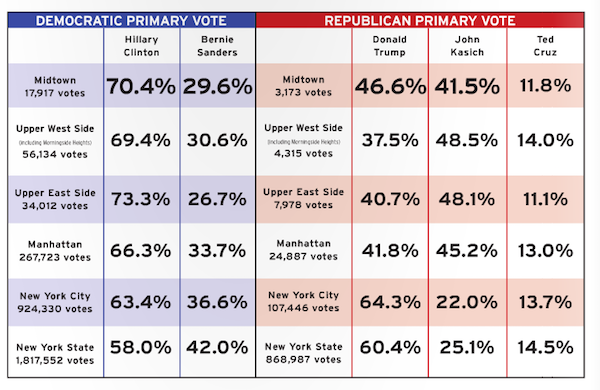
On the Democratic side, where city residents made up 50.9 percent of the statewide total — with Manhattan representing 14.7 percent of all votes across New York State — Clinton captured nearly 1,055,000 votes, or 58 percent of more than 1.8 million in total.
The former secretary of state performed even stronger in New York City, especially Manhattan. Citywide, she earned 63.4 percent of the vote, and in the borough, 66.3 percent.
Midtown and the Upper East and Upper West Sides were among her very strongest areas. In Midtown neighborhoods, she garnered 70.4 percent of the total, on the Upper West Side, including Morningside Heights, 69.4 percent, and on the Upper East Side, 73.3 percent.
In previous contests during this primary season, Clinton has performed particularly well among black and Latino voters, which she did in New York as well, while Vermont Senator Bernie Sanders has often bested her among white voters. In this week’s contest, however, Clinton split the white vote down the middle with Sanders, while capturing three out of every four black voters, and nearly two-thirds of Latinos.
Sanders has also done very well with male voters this year, but in New York Clinton held him to an even split. Among women voters, who were nearly 60 percent of all Democrats who turned out for the primary, she enjoyed a 26-percentage point advantage.
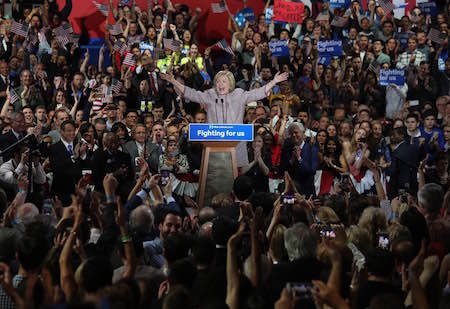
Only young voters retained the loyalty to Sanders they’ve shown in past contests, with 18 to 29-year-olds, who were 18 percent of the total, giving him a 30-point edge. However, among the next older age group, those 30 to 44, who made up 24 percent of the total, Clinton had a six-point advantage. Her margins grew larger among each older cohort.
As a result of Tuesday’s contest, Clinton now enjoys a 246-pledged delegate advantage over Sanders, 1,446 to 1,200, out of the 2,383 needed to secure the nomination. An additional 502 superdelegates — party and elected officials given automatic seats at the convention — have said they support Clinton (though they are free to change their minds at any time), while only 38 are siding with Sanders.
On the GOP side, Trump now has 844 of the 1,237 delegates he would need to win the nomination, trailed badly by Cruz at 543.
Cruz is essentially out of the running for a first ballot victory in Cleveland this summer, while the prospects for Sanders overtaking Clinton in pledged delegates are also slim.
The next contests occur next Tuesday, April 26, in Connecticut, Rhode Island, Pennsylvania, Delaware, and Maryland, where the demographic similarities to New York and what polls have been taken suggest that Clinton and Trump are in strong positions there, as well. The GOP contests in Pennsylvania, Maryland, and Delaware, where a total of 125 delegates are at stake, are winner-take-all or winner-take-most primaries, meaning that if Trump holds on to his leads there, next Tuesday could prove a pivotal evening for his campaign.
The three largest Republicans primaries that follow next week’s — in Indiana, on May 3, and in California and New Jersey, on June 7, also allocate delegates on a winner-take-all or winner-take-most basis. However, given that the California contest, with 172 GOP delegates up for grabs, does not happen until the very end of the primary season, the question of whether Trump can prevail on a first ballot will not be answered any time soon.
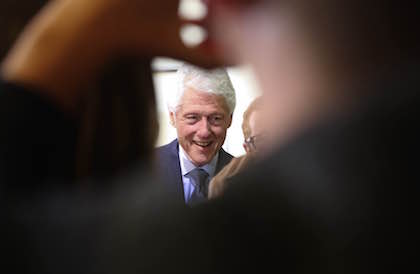
On the Democratic side, where no contests are winner-take-all but instead allocate delegates proportionally according to the popular vote, closing a 250-pledged delegate gap is a tall order this late in the primary season. As a result, Sanders will likely need an upset or two somewhere next week to change a narrative in which Clinton is well ahead and superdelegates, already inclined to support her, would not buck the will of voters who are delivering her that advantage.
Clinton now seems like the prohibitive Democratic favorite, while Trump remains in a position where he could yet capture a first ballot victory. Given Cruz’s success, however, in having some Trump delegate slots put in the hands of his supporters — who would be bound to the frontrunner only for the first ballot — should Trump not arrive in Cleveland with 1,237 votes in hand, all bets are off.





